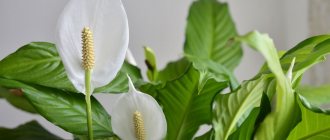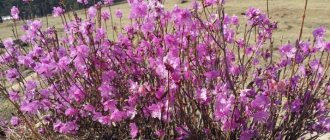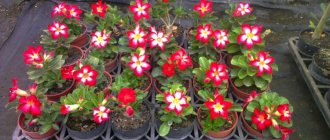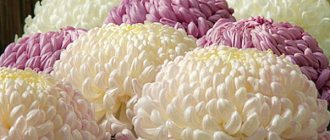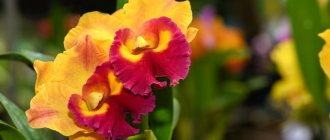From the article you will learn what a globular chrysanthemum flower looks like; photos of the plant are given in the section at the bottom of the article. A detailed description tells about the varieties and varieties of flowers. With the help of this review, you will receive information on how to choose the chrysanthemum you need based on the flowering time. You will become fully familiar with planting, propagating and caring for the plant, and you will be able to protect the flower from diseases and pests. Take advantage of the acquired knowledge and grow a magnificent chrysanthemum in the shape of a ball in your apartment or near your home.
Types and varieties of chrysanthemum, appearance
Globular chrysanthemum is a young variety bred specifically for decorative cultivation; some varieties are suitable for cutting for bouquets. Like all chrysanthemums, the plant belongs to the Asteraceae family.
A huge number of varieties and species of this flower have been bred. There are 16 species of spherical chrysanthemum, and there are several thousand varieties, among them there are both perennial varieties and annual plants. Decorative spherical chrysanthemums grow as a bush, the height of which does not exceed 0.7 m, and the plant acquires the shape of a ball on its own, without additional pruning.
All existing spherical varieties and species are divided into groups according to the height of the bush:
- The border group of chrysanthemums includes flowers with a bush, the height of which is 15-30 cm. In most cases, varieties of this group do not form root shoots, have a natural spherical shape, and bloom starting in the first months of summer. They look beautiful in pots.
- The medium-sized group collected plants with a height of up to half a meter. Plants can be grown for cutting. The varieties are varied, with a wide range of flower colors.
- Tall spherical chrysanthemums reach 70 cm.
According to the timing of flowering, early, middle and late varieties are distinguished. Taking into account the timing of flowering, landscape designers create flower beds that delight the eye with bright colors throughout the warm period of the year, from late June to October. In this case, both border and bush chrysanthemums are used.
Popular varieties of spherical chrysanthemums:
- Chrysanthemum Branindio - blooms in August. Yellow flowers have a golden-orange center, a diameter of 3-7 cm. The bush is highly branched, regular spherical in shape, up to half a meter in height.
- Branfountain varieties bloom from mid-September until cold weather, the diameter of the bush reaches half a meter, the flowers are double, approximately 4 cm in diameter. It has white, purple, salmon, and lemon colored flowers.
- Multiflora Branhill, the bush grows up to 30-40 cm, very lush, covered with flowers (their diameter is up to 5 cm) so that the leaves are not visible. Blooms in August and comes in two colors, Branhill Cherry with light cherry blossoms and Branhill Red with dark red blossoms. This variety can be used to grow low-growing dwarf borders.
- The late chrysanthemum Bransky plum has a tall bush (up to 70 cm) and double flowers of bright plum color, which delight the eye throughout September.
Look in our gallery of chrysanthemum multiflora spherical (varieties) photo selection of 30 colorful images.
Planting and transplanting
Soleirolia grows quickly and requires annual replanting. The best time to change your place of residence is early spring.
Priming
The plant prefers loose soil, without lumps. This can be purchased soil for decorative foliage plants. When preparing it yourself, take an equal amount of peat, sand, earth, and humus.
You can use ready-made soil for decorative foliage plants
Capacity
The flowerpot needs to be wide and shallow - the roots are superficial and need space. To avoid stagnation of water, pebbles are placed at the bottom of the container in a layer of 3 cm.
Select a wide and shallow flowerpot for saltrolia
Transshipment
The plant is transferred annually to a larger pot.
- Prepare nutritious soil.
- Place drainage on the bottom of the bowl and sprinkle with earth.
- The roots with a lump of earth are placed in a container and the voids are filled with earth.
- In a new place, allow the flower to take root without watering. After three days, provide normal care.
Transfer
The newly purchased plant also needs to be transplanted from the transport substrate to a new one.
- Be sure to wash the leaves with warm water to wash off the substance that is used to treat the plant for greater preservation.
- The roots are completely freed from the ground, damaged parts are removed, and the cuts are sprinkled with ash.
- The plant is planted in new nutrient soil and watered.
Gelksina easily tolerates transplantation and quickly takes root.
After transplantation, Gelxin quickly grows
Support
The plant can be grown in the form of a ball if formative pruning is carried out in time. Or as an ampel, pruning thinned long shoots. In this case, the soleirolia falls in a beautiful cascade or, easily climbing up a support (wooden lattice, stand), quickly turns into a thick carpet. The pots in the form of various figures, framed by green curls, look unusual.
Decorative pots covered with greenery look original
Application
In medicine
Tea is brewed from dried chrysanthemum flowers, which has the following effect on the body:
- lowers blood pressure by dilating blood arteries;
- regulates the functioning of the heart muscle;
- has an antibacterial effect, helps with shortness of breath;
- removes toxins from the body, promoting its cleansing;
- calms down nervous excitement;
- improves hearing and vision.
At home
The plant is used to decorate rooms and gardens, create ekibana from dried flowers, make other crafts, and make fragrant sachets.
In cosmetology
For cosmetic care of the skin of the face and body, both water tinctures and extracts of chrysanthemum flowers and oil essences are used. Cosmetic baths, wraps, masks, and rubs are made with chrysanthemum essential oil.
general information
Daisies are asteraceae, and most often grow in the wild in Mediterranean countries. From ancient Greek, their name is translated as “pearl,” and this is all because wild daisies are small and snow-white.
The buds bloom with the first rays of the sun, and in some cultures these flowers symbolize the beginning of a new day. At its core, it is a small herbaceous plant with an equally shallow root system. One bud is formed on a leafless stem. It blooms into a delicate flower with a yellow center.
Daisies are perennials, but gradually the bushes grow and bloom worse. To maintain their decorative properties, they need to be periodically rejuvenated and replanted. Daisies are also actively used in folk medicine, and they are also used to make teas and herbal mixtures.
Photo: oir.mobi
Nutritional value and chemical composition
- Calorie content of dried inflorescences – 24 kcal/100 g.
- The raw materials include: flavonoids, organic acids, carotenoids, a wide range of vitamins, unsaturated aromatic lactones of the unsaturated series, organic acids, amino acids, sugars, pectins, macro- and microelements, anthocyanins, glycosidic compounds, aromatic essential oils, hydrocarbons.
Caring for Daisies
Winter-hardy and unpretentious daisies are very easy and pleasant to grow. They are suitable even for novice gardeners because they do not require any complex manipulations.
Temperature
Daisies germinate best at about +20 degrees. It is especially important to consider this if you are planting home seedlings in early spring.
Photo: dachaproekt.ru
Lighting
Daisies prefer diffused but abundant light. They can grow in partial shade, but then you will not be able to achieve such bright and lush flowering. Moreover, peduncles can stretch and become deformed.
Photo: vapeshop77.ru
Watering
Daisies do not have a very deep root system, so they do not absorb moisture well on their own. Therefore, they need regular, abundant watering. With a lack of water, the inflorescences become smaller, and double ones also lose this feature.
Photo: flo.discus-club.ru
The soil
Daisies grow beautifully in any soil as long as it is fertile enough and has good drainage. They especially like loams, which retain the moisture the daisies need. After watering, be sure to loosen and mulch the soil.
Photo: oir.mobi
Fertilizers and fertilizing
As soon as the ground completely thaws, you need to apply the first fertilizing, mainly urea. Next time, apply fertilizer at the beginning of summer for lush flowering. This is the optimal minimum, and then look at the condition of your soil and flower garden.
Photo: oir.mobi
Wintering
Daisies overwinter in the ground and do not cause any trouble. There is no need to even cut off the leaves and buds, because the plant uses the nutrients from them. But we recommend covering the bushes with leaves or spruce branches.
Photo: pxhere.com
Castor bean (50 photos): types, care and planting in open ground
How to grow, care and pests and diseases
Beautiful spherical chrysanthemums, the cultivation and care of which are not particularly difficult, will perfectly decorate your home and garden. Simple rules for growing and caring for them will tell you how and where to plant a plant, how to care for it in summer and autumn, and how to preserve it in winter.
- They are planted in open ground when consistently warm weather sets in, usually in the first half of May.
- Where to plant: the plant loves loose, rich, moderately acidic soil. For placement, choose well-lit places without drafts.
- How to propagate: by green cuttings, dividing the bush, rhizomes. If you use seed propagation, then varietal characteristics are extremely rarely preserved.
- How the spherical chrysanthemum overwinters: after flowering, the branches are cut off, leaving 12-15 cm in length. In warm areas, you can leave the flower in the soil for the winter, insulating it on top with sawdust and fallen leaves. In cold northern regions, the plant is dug up, transplanted into a container and stored until spring (with watering once a month) in a cool place at a temperature of about 5 °C.
What diseases does the plant suffer from, what pests can appear on the globular chrysanthemum:
- Fungal diseases are caused by heterotrophic organisms that live in the soil and on plant debris. To treat a plant, it is necessary to thin out the bush, reduce the acidity of the soil (do not allow a large amount of nitrogen in fertilizers), and treat it with chemicals.
- Dark spots on the leaves are caused by microorganisms of the Mycospherellella family; the disease is called Septoria and lives in plant debris. As treatment and prevention, it is necessary to regularly remove fallen leaves, avoid excessive watering, and you can treat the bush with fungicides.
- Chrysanthemum can be affected by pests: spider mites, slugs, aphids, weevils, thrips, caterpillars. To combat insects, folk remedies or chemicals (methylpyrimifos, derris, etc.) are used.
This is how a spherical chrysanthemum is planted; planting and care are simple and straightforward.
Perennial Golden Ball: description of flowers
Flowers Golden Balls: photo
C. Linnaeus is rightfully considered the discoverer of the Golden Balls. From the Atlantic, rubecia later “moved” to the European part of the Earth. In the wild habitat, there are the following varieties of rudbeckia: dissected, glossy, hairy, shiny.
The golden ball flower has the botanical name Rudbeckia. These plants are perennial, reaching a height of 2 to 2.5 meters. The leaves are green, very dissected. The flowers have a round shape, the diameter of the flowers varies around 10 cm. The inflorescences are a collection of tubular-shaped petals with reed petals around.
The Golden Balls themselves differ mainly in height. Golden balls grow no more than one meter. Before the intervention of breeders, the Golden Ball had one important drawback, which was that the high parts of the bush tilted in different directions due to its own gravity. It is not difficult to guess that this greatly spoiled the beauty of the rudbeckia flower beds.
Growing from seeds by sowing into the ground
Annuals are sown directly into the ground in the spring, according to the scheme - 3-4 plants per 1 m². You can sow thicker and thin out later. Seed placement depth is 5 mm.
To extend the flowering period, sowing is carried out in several stages, with a certain interval.
Perennials are also sown in the ground, immediately in a permanent place: in April-May, or before winter.
The seedlings are thinned out, leaving a specified distance between the seedlings for the species (variety).
The root system of most gypsophila is taproot. Due to this, the plant does not tolerate transplantation well. The best option would be to sow the seeds directly into the ground, in a permanent place.
Sowing in the ground, however, has its pitfalls. Some of the seeds may be carried away by the wind; some, as a result of heavy rains, will go deep into the ground and will not germinate. Another part will be damaged by insects.
As a result, some percentage will certainly rise, but not all. You can play it safe and at the same time resort to the seedling method.
@americanmeadows
@grassia
